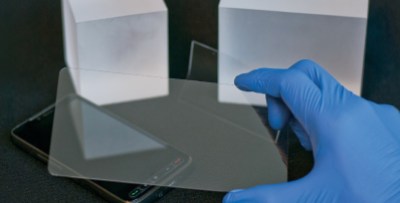
Apple has bought $578M worth of Sapphire, and their plan appears to be to make screens out of sapphire for future iDevices.

Sapphire, specifically synthetic, manufactured sapphire, has several properties that make it of interest to Apple. First of all, sapphire is superior to glass, even Corning’s Gorilla Glass material, in several ways. Synthetic sapphire has no color, as it’s a single crystal grown to be optically transparent — making it look very similar to glass. But it’s also extremely hard — 9 on the Mohs scale — which means better scratch resistance.
“Chemically strengthened glass can be excellent, but sapphire is better in terms of hardness, strength, and toughness,” says Matthew Hall, Director of the Center for Advanced Ceramic Technology at the Kazuo Inamori School of Engineering at Alfred University. “The fracture toughness of sapphire should be around 4 times greater than Gorilla Glass – about 3 MPa-m0.5 versus 0.7 MPa-m0.5, respectively.”
The hardness of sapphire will make it resistance to ‘flaw initiation’ (aka starting to scratch) and its ‘toughness’ is how it resists fracture once a flaw has begun (cracking altogether). This strength doesn’t come without a bit of cost, Hall notes. “The density of Gorilla Glass is 2.54 g/cm3 while sapphire is 3.98 g/cm3. Given equal-sized pieces, Gorilla Glass will always be lighter.”
The counter-point to the greater weight is that Apple could use thinner pieces of sapphire due to its greater strength overall. This would result in weight and thickness reduction, which is something Apple is very conscious about. You may have noticed that the latest iPad Air was reduced in thickness in part due to its use of thinner glass and IGZO display panels.
Sapphire has fairly good optical qualities, as well, says Hall. Both materials have roughly similar absorption properties, though sapphire’s refractive index is a bit higher, which would mean a tradeoff in light transmission for durability.
“Gorilla Glass is about 1.5 while sapphire is about 1.76 — the exact number is wavelength-dependent,” Hall says. “The reflection that occurs at an interface is directly proportional to the refractive index difference between the two media creating that interface.”
The technical details of GT Advanced’s sapphire product match up well with these numbers, you can read those here (pdf). This means that, in roughly the same amount of incident light, Gorilla Glass would allow for a brighter image than sapphire. The key difference between the two materials, and this is where we get to why Apple just ensured its own supply, is the manufacturability of sapphire vs. glass.
Corning seems confident that Gorilla glass is still better, but the facts are evident. To know for sure we’ll just have to wait and see.
Now consider the apparent fact that Sapphires cost roughly as much as gorilla glass.






Gadgets breaks